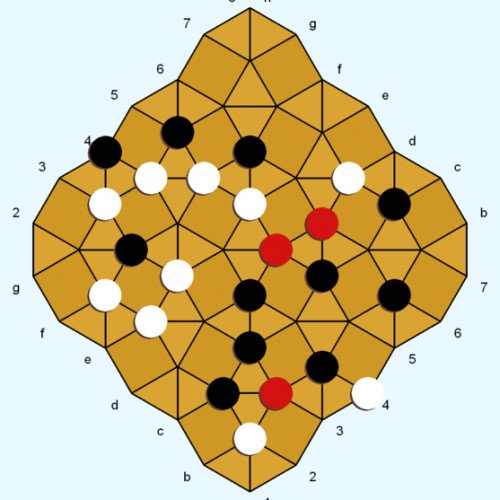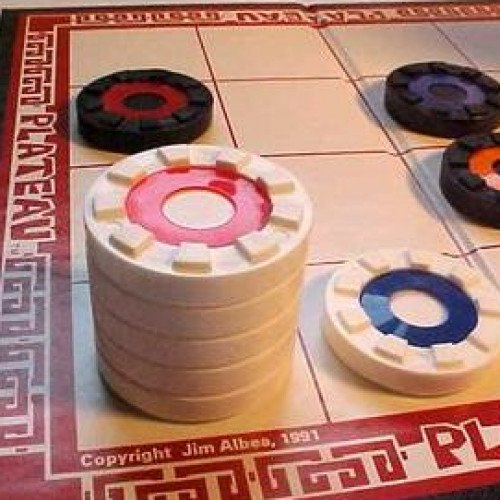DIAMOND VS PLATEAU

DIAMOND
Diamond is a two-player abstract strategy board game invented by Larry Back. The invention was inspired by the game Kensington, which uses a similar board pattern and game objective. Rules for Diamond were conceived in 1985 and finalized in 1994. Diamond introduces a new board geometry and neutral pieces, with the aim of enhancing the game dynamic and lowering the potential for draws. Diamond was featured in the February 2013 issue of Games magazine. The Diamond gameboard consists of interlocking squares and triangles. White and Black each control 12 game pieces of their own color. Neutral pieces (red-colored in the diagrams) enter the game via captures. The pieces are played on the line intersections (called points, as in Go). White and black (but not red) pieces can move along straight lines to adjacent unoccupied points. A player wins by being the first to occupy all four corners (points) of a board square with their pieces. Capturing moves are possible in the Movement phase. If the points of a triangle contain exactly one white and one black piece, either player can capture the opponent piece by occupying the remaining open point ("cornering" the enemy piece on the triangle). The captured piece can be cornered on one triangle (see Example 1), or simultaneously cornered on two different triangles (Example 4). The captured piece is immediately removed from the game and replaced on its point by a neutral piece. If a move simultaneously corners two opponent pieces on two different triangles, then neither enemy piece is captured (Examples 2 and 3). A piece can move safely to a triangle point even if the other two points of the triangle are occupied by enemy pieces (Example 5).
Statistics for this Xoptio

PLATEAU
Plateau is a two-player abstract strategy board game invented by Jim Albea. The game was developed over a two-year period culminating in its present form on May 12, 1986. The original name for the game was Pinnacle, but it was discovered that an older board/card game had that name, so around 1989 the name was changed to Plateau. From the 1980s through the 1990s Plateau was played at Science Fiction conventions mostly in the Southeastern United States. From the 1990s to the present, the game is played live at an online game site and via email. In 1997 a computer implementation of the game was created which facilitates email play and has a computer robot. Onboarding is adding one new piece to the play. This new piece can be placed anywhere that doesn't directly harm an opposing piece. For instance, you can onboard to any blank square or on top of any of your own pieces. The majority of Plateau moves are onboards. Instead of Onboarding or Moving, a player can choose to spend his turn exchanging prisoners. Prisoners are exchanged using the point values of the pieces. A simple value-for-value system is used. Since the pieces range in value from 1 point (for the mute) to 21 points (for the Ace) there are usually several combinations and options available for the players. The player initiating the exchange selects the pieces he wishes to exchange. These pieces will all add up to some point value. The responding player then has four options depending on the point values of the prisoners that he holds.